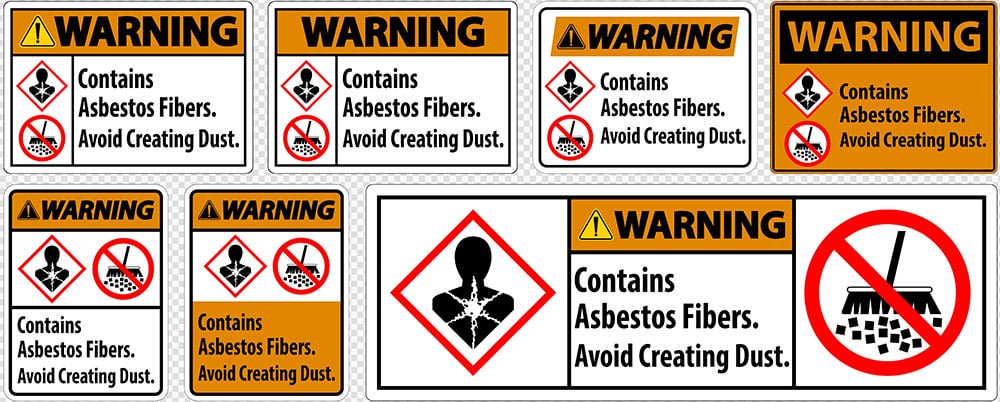Asbestos: Origin, UK Legislation, and Safe Removal
Asbestos: Origin, UK Legislation, and Safe Removal Introduction Asbestos, a term that evokes concerns of health risks and structural hazards, …

Asbestos has been used for centuries in construction, engineering and technological endeavours, so it’s natural to worry about accidental exposure. Thankfully, the use of asbestos has been illegal in the UK since 1999, with some forms of asbestos banned as early as the 1960s. So, while some rogue asbestos is still out there and can pose a risk, the vast majority has now been removed and safely disposed of.
We’ll look at the main factors determining the likelihood of exposure, so you can understand what’s putting you most at risk. But it’s also worth remembering that, thanks to the UK ban on asbestos and the prompt removal of troublesome material, related deaths are expected to peak in the 2020s and then abate, so the number of people developing any serious conditions is set to gradually decrease in the years to come.
When trying to judge how much risk is involved with asbestos, you should think about five things:
How much asbestos were you exposed to? For anyone undertaking DIY renovations who may have unwittingly disturbed some asbestos, the risk is fairly low. If the asbestos was damaged, crumbling or you modified it in any way (such as sawing, drilling, cutting etc.) then the risk is higher. If you knew that asbestos might be a concern and took precautions such as wearing protective clothing (gloves, face mask etc.) then that reduces the risk – though it’s always best to ask removal experts to take care of anything confirmed as asbestos.
People involved in major disasters such as earthquakes or bomb attacks, where buildings are affected, are often exposed to large quantities of asbestos dust.
How long were you exposed to it? Short term exposure is classed as lower risk, as the effects of asbestos are cumulative – they build up over time. Repeated exposure in small doses, though, is more likely to pose medical problems later in life for this reason. If you’re someone who regularly works in an environment where you’re exposed to asbestos, you’re at significantly greater risk than someone who occasionally visits your place of work, or encounters asbestos in a DIY situation.
There is believed to be a correlation between smoking and likelihood of developing asbestos-related diseases, as the damage done to your lungs through smoking is then exacerbated by the asbestos – and vice versa. The combination of both asbestos and cigarette smoke increases your chances of developing lung cancer.
There are 6 different types, all given a different colour – white, red, yellow, green, grey and blue. White asbestos is the most commonly recognised and understood, as it has been widely studied. It is known to be dangerous, but the other 5 types are all held to be even more damaging to health.
While asbestos is damaging to everyone who inhales any of the fibres, not everyone develops the more serious diseases known to be caused by asbestos, even if they have had intense or prolonged exposure. It is now thought that there is a genetic component which makes some people more susceptible to the effects of asbestos.
These five factors, when judged in combination, can help you determine how much risk you’re at from asbestos exposure. The difficulty lies in knowing whether you’ve been affected, as asbestosis and other related conditions generally take 20-30 years to develop – so by the time you show any signs or symptoms, the cause may be long forgotten.
If there is any chance that you might have been exposed to asbestos, it’s best to tell your GP straight away, so it can be noted on your medical records – this will help doctors to support you better in later life, should you go on to develop any medical conditions that may be linked to exposure.
Of course, no exposure to asbestos is ever totally safe – even the smallest amount is considered dangerous to health – but hopefully now you have an idea of the different factors which determine the risks asbestos poses to you, as well as what to avoid in future in order to keep yourself safe.
And remember, if you’re ever in doubt about whether something is asbestos, or whether it’s safe to remove – call in the experts. We’re here for a reason!
Note: Please read the following article Health Symptoms of Asbestosis here.
Asbestos: Origin, UK Legislation, and Safe Removal Introduction Asbestos, a term that evokes concerns of health risks and structural hazards, …
What are Hazardous Waste items in the UK? In the UK, hazardous waste is waste that poses a potential risk …
Of all the different types of removal services offered by us and many others, rubbish removal costs are often the …